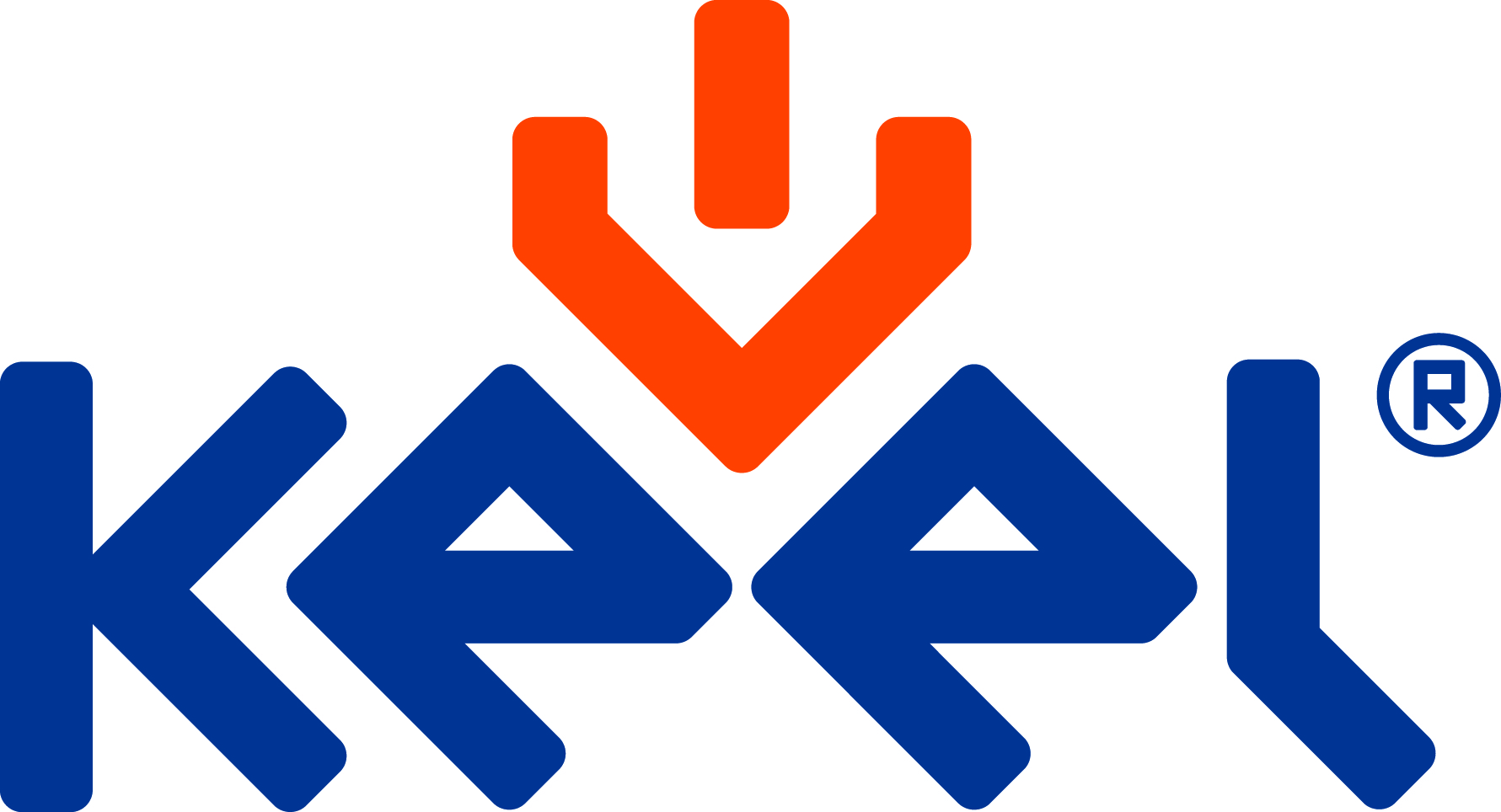Keel Solution Digitizes Plants: The Challenges Behind This Work
We met with the Keel Solution team several times to write this article. The reason is simple: the company operates in a niche that’s quite unusual for the Ukrainian IT industry. So, to make it clearer, let’s start with an easy example — one that anyone can visualize.

One of their clients is a large international conglomerate that brings together several major oil companies from Asia and the Middle East. If you watch Formula 1, you’ve definitely seen their logos among the main sponsors of the races. They are building a massive, brand-new oil refinery complex. Such a complex consists of roughly 300,000 pieces of equipment, each containing an immeasurable number of parts — millions, in total. Imagine buying a Lego set with 2,000 pieces — only now, multiply that by tens of millions, coming from a thousand different contractors.
Keel Solution’s task sounds deceptively simple: collect all the information on all the equipment from all the contractors. In total, that’s about four terabytes of project documentation. Then, all this data must be sorted, verified, and grouped so that a spare parts warehouse can be built. The goal is to ensure that when something breaks, the team can quickly locate the right part in the warehouse and replace it immediately.
But even that’s not straightforward. Keeping a warehouse with millions of spare parts isn’t an option. It’s far too expensive and takes up enormous space. The solution is to find commonalities. Imagine you have all Siemens appliances at home — a dishwasher, a washing machine, a dryer, and more. Many of their parts — legs, tubes, electric motors — are identical. There’s no point in storing three electric motors if one can fit all three appliances.
That’s exactly what Keel Solution does: analyze all available parts, group them, identify the critical ones, and help form an optimized warehouse that won’t cost a fortune. At the same time, the team must know the nuances: for example, that some bearings can be interchanged, while others cannot.
The result? For one client, the company reduced warehouse size by almost 40%. Before Keel Solution’s work, there were $25 million worth of parts; after optimization, the amount was reduced to $14 million. That’s $11 million freed up for business development instead of being frozen in inventory.
«Now you understand how difficult it is for me to explain what we do,» says Yaroslav Zherebetskyy, partner and COO of Keel Solution. It’s understandable. If you ask what his company does, he can either tell the long but fascinating story above or tailor his answer to whoever’s asking.

- If he’s talking to an industrial facility owner, he’ll say the company specializes in Data Engineering and provides engineering business consulting — optimizing business processes in technical maintenance, warehouse management, and supply chain operations.
- If he’s talking to someone outside the industry, the term «Data Engineering» can be misleading — it sounds like Keel Solution is a general IT firm that can write any program and build custom CRMs on demand. For such individuals, Yaroslav explains that Keel Solution helps digitize large and complex engineering systems.
- Then there’s the opposite problem — some people come to the company looking to buy hydraulic hoses or other industrial equipment.
For Yaroslav’s team, which assists Ukraine’s Ministry of Defense in implementing SAP and supports some of the largest offshore wind farms in Scandinavia, this confusion is undesirable. It complicates hiring and makes an «elevator pitch» nearly impossible.
«Let’s be honest,» I say, «the industries you work in don’t sound very sexy. It’s not like fintech.»
«I disagree,» Yaroslav replies immediately.
In 2008, the price of oil reached $130 per barrel, and it remained above $100 until mid-2014. «Investments were pouring into the sector,» recalls Zherebetskyy. The industry was very ‘sexy’ until 2014. At that time, he was living in Denmark, working for a major client involved in constructing specialized drilling ships: one company alone invested $7 billion — a colossal amount. Then came green energy, and tens of billions of dollars invested in wind farms. That sector was once ‘sexy’ until fintech took center stage. Each of these industries, he says, had its moment of glory.
Yaroslav entered the industry in 2010 and became a partner at Keel Solution in the mid-2010s. Back then, the company had over 120 employees, its largest size ever. However, today, headcount is no longer the most effective measure of scale. Accumulated knowledge, expertise, automation, and now artificial intelligence, allow Keel Solution to process data faster and eliminate repetitive tasks that once required large teams.
Recruitment, however, remains a serious challenge. As mentioned, it’s hard to explain what the company does, so some applicants simply aren’t the right fit. Zherebetskyy describes the ideal candidate as an engineer, electrician, or mechanic with a minimum B1-level English proficiency, a mathematical mindset, and the ability to master various IT tools. From hiring to full productivity, onboarding can take 6 to 9 months. The process is tough, and such specialists are rare, competing with both traditional IT and industrial companies for the same talent.
What Keel Solution can offer, though, are non-trivial tasks. Most clients today are from Scandinavia and Germany, countries heavily investing in wind energy. The work often includes on-site visits to offshore drilling platforms, hydropower plants, and manufacturing facilities, dealing with enormous datasets. Zherebetskyy mentions one project involving 60,000 wind turbines and 50 million database records.
Each project is unique — knowledge from one manufacturer rarely transfers directly to another. The team carries over only their expertise and approach. These are the realities of what’s known as «artificial production» — where every large facility is custom-built, assembled by hand, and not repeatable. Like the facility we talked about at the very beginning, it has 300,000 pieces of equipment, all assembled by hand into one unique plant. That’s the difference between this and conveyor (mass) production.
Ukraine knows this story well. Each power plant, thermal or combined heat and power, is a unique system. To repair them quickly after shelling, a spare parts warehouse is crucial, though many parts are no longer in production. That’s why some must be sourced from abroad.
Keel Solution applies the same expertise to support the Ministry of Defense of Ukraine. Before the war, much of the Western equipment in use existed only on paper. In peacetime, that’s manageable, but in wartime, it’s a serious problem. The team digitized spare parts catalogs for 275 types of heavy weapons. The largest catalog had 8,686 pages, from which 40,187 spare parts were extracted and entered into the SAP system. This work is vital because Ukraine’s military equipment comes from dozens of countries — with different tanks, artillery systems, and armored vehicles. Digitization helps bring order and efficiency. Recently, Keel Solution has also begun working with large drone manufacturers.
What’s Next? Looking ahead, Yaroslav hopes to count Oracle, OpenAI, or Meta among the company’s future clients. These tech giants are building hundreds of data centers, entering the energy sector, and creating vast AI infrastructure — the very kind of complex, mission-critical systems Keel Solution has been working with for more than a decade. Downtime in such facilities costs millions. And Keel Solution is ready for the new challenges.
Keel Solution Digitizes Plants: The Challenges Behind This Work
We met with the Keel Solution team several times to write this article. The reason is simple: the company operates in a niche that’s quite unusual for the Ukrainian IT industry. So, to make it clearer, let’s start with an easy example — one that anyone can visualize.

One of their clients is a large international conglomerate that brings together several major oil companies from Asia and the Middle East. If you watch Formula 1, you’ve definitely seen their logos among the main sponsors of the races. They are building a massive, brand-new oil refinery complex. Such a complex consists of roughly 300,000 pieces of equipment, each containing an immeasurable number of parts — millions, in total. Imagine buying a Lego set with 2,000 pieces — only now, multiply that by tens of millions, coming from a thousand different contractors.
Keel Solution’s task sounds deceptively simple: collect all the information on all the equipment from all the contractors. In total, that’s about four terabytes of project documentation. Then, all this data must be sorted, verified, and grouped so that a spare parts warehouse can be built. The goal is to ensure that when something breaks, the team can quickly locate the right part in the warehouse and replace it immediately.
But even that’s not straightforward. Keeping a warehouse with millions of spare parts isn’t an option. It’s far too expensive and takes up enormous space. The solution is to find commonalities. Imagine you have all Siemens appliances at home — a dishwasher, a washing machine, a dryer, and more. Many of their parts — legs, tubes, electric motors — are identical. There’s no point in storing three electric motors if one can fit all three appliances.
That’s exactly what Keel Solution does: analyze all available parts, group them, identify the critical ones, and help form an optimized warehouse that won’t cost a fortune. At the same time, the team must know the nuances: for example, that some bearings can be interchanged, while others cannot.
The result? For one client, the company reduced warehouse size by almost 40%. Before Keel Solution’s work, there were $25 million worth of parts; after optimization, the amount was reduced to $14 million. That’s $11 million freed up for business development instead of being frozen in inventory.
«Now you understand how difficult it is for me to explain what we do,» says Yaroslav Zherebetskyy, partner and COO of Keel Solution. It’s understandable. If you ask what his company does, he can either tell the long but fascinating story above or tailor his answer to whoever’s asking.

- If he’s talking to an industrial facility owner, he’ll say the company specializes in Data Engineering and provides engineering business consulting — optimizing business processes in technical maintenance, warehouse management, and supply chain operations.
- If he’s talking to someone outside the industry, the term «Data Engineering» can be misleading — it sounds like Keel Solution is a general IT firm that can write any program and build custom CRMs on demand. For such individuals, Yaroslav explains that Keel Solution helps digitize large and complex engineering systems.
- Then there’s the opposite problem — some people come to the company looking to buy hydraulic hoses or other industrial equipment.
For Yaroslav’s team, which assists Ukraine’s Ministry of Defense in implementing SAP and supports some of the largest offshore wind farms in Scandinavia, this confusion is undesirable. It complicates hiring and makes an «elevator pitch» nearly impossible.
«Let’s be honest,» I say, «the industries you work in don’t sound very sexy. It’s not like fintech.»
«I disagree,» Yaroslav replies immediately.
In 2008, the price of oil reached $130 per barrel, and it remained above $100 until mid-2014. «Investments were pouring into the sector,» recalls Zherebetskyy. The industry was very ‘sexy’ until 2014. At that time, he was living in Denmark, working for a major client involved in constructing specialized drilling ships: one company alone invested $7 billion — a colossal amount. Then came green energy, and tens of billions of dollars invested in wind farms. That sector was once ‘sexy’ until fintech took center stage. Each of these industries, he says, had its moment of glory.
Yaroslav entered the industry in 2010 and became a partner at Keel Solution in the mid-2010s. Back then, the company had over 120 employees, its largest size ever. However, today, headcount is no longer the most effective measure of scale. Accumulated knowledge, expertise, automation, and now artificial intelligence, allow Keel Solution to process data faster and eliminate repetitive tasks that once required large teams.
Recruitment, however, remains a serious challenge. As mentioned, it’s hard to explain what the company does, so some applicants simply aren’t the right fit. Zherebetskyy describes the ideal candidate as an engineer, electrician, or mechanic with a minimum B1-level English proficiency, a mathematical mindset, and the ability to master various IT tools. From hiring to full productivity, onboarding can take 6 to 9 months. The process is tough, and such specialists are rare, competing with both traditional IT and industrial companies for the same talent.
What Keel Solution can offer, though, are non-trivial tasks. Most clients today are from Scandinavia and Germany, countries heavily investing in wind energy. The work often includes on-site visits to offshore drilling platforms, hydropower plants, and manufacturing facilities, dealing with enormous datasets. Zherebetskyy mentions one project involving 60,000 wind turbines and 50 million database records.
Each project is unique — knowledge from one manufacturer rarely transfers directly to another. The team carries over only their expertise and approach. These are the realities of what’s known as «artificial production» — where every large facility is custom-built, assembled by hand, and not repeatable. Like the facility we talked about at the very beginning, it has 300,000 pieces of equipment, all assembled by hand into one unique plant. That’s the difference between this and conveyor (mass) production.
Ukraine knows this story well. Each power plant, thermal or combined heat and power, is a unique system. To repair them quickly after shelling, a spare parts warehouse is crucial, though many parts are no longer in production. That’s why some must be sourced from abroad.
Keel Solution applies the same expertise to support the Ministry of Defense of Ukraine. Before the war, much of the Western equipment in use existed only on paper. In peacetime, that’s manageable, but in wartime, it’s a serious problem. The team digitized spare parts catalogs for 275 types of heavy weapons. The largest catalog had 8,686 pages, from which 40,187 spare parts were extracted and entered into the SAP system. This work is vital because Ukraine’s military equipment comes from dozens of countries — with different tanks, artillery systems, and armored vehicles. Digitization helps bring order and efficiency. Recently, Keel Solution has also begun working with large drone manufacturers.
What’s Next? Looking ahead, Yaroslav hopes to count Oracle, OpenAI, or Meta among the company’s future clients. These tech giants are building hundreds of data centers, entering the energy sector, and creating vast AI infrastructure — the very kind of complex, mission-critical systems Keel Solution has been working with for more than a decade. Downtime in such facilities costs millions. And Keel Solution is ready for the new challenges.





